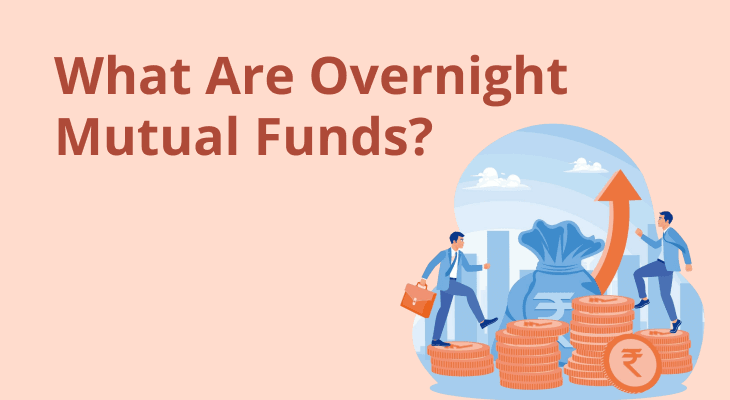
What are Mid Cap Funds?
When it comes to investing in the Indian stock market, you might find yourself caught between the stability of large-cap funds and the allure of high-growth potential in small-cap funds. If you seek a sweet spot that offers a balance of risk and returns, then mid cap mutual funds might just be the ideal choice for you.
In this article, we will discuss what are mid cap funds, things to consider before investing in them, and the top mid cap mutual funds in India.
Understanding Mid Cap Mutual Funds
Mid cap mutual funds belong to the category of equity mutual funds that focus on investing in stocks of mid-sized companies. These companies are generally well-established and hold promising growth potential in the coming years. By striking a balance between the stability of large cap funds and the growth potential of small cap funds, mid cap funds have become a favoured option among investors seeking a moderate level of risk with the potential for higher returns.
Factors to Consider Before Investing in Mid Cap Funds
Investment Goals
Clearly define your investment objectives. Are you investing for short-term gains or long-term wealth creation? Understanding your goals will help you choose the right mid cap funds that align with your financial aspirations.
Returns
While mid cap funds have the potential to provide higher returns than large-cap funds, they can also be more volatile. Assess your risk tolerance and determine whether you can withstand short-term market fluctuations for potentially higher long-term gains.
Risk
As with any investment, there is a certain level of risk associated with mid cap funds. The stocks of mid-sized companies can be subject to market swings and economic uncertainties. Analyse the risk appetite and make sure it suits your risk tolerance.
Expense Ratio
The expense ratio is the annual fee charged by the mutual fund house to manage your investment. Since mid cap funds are actively managed, their expense ratios may be slightly higher than passively managed funds. Compare expense ratios among different funds to ensure you are not paying excessive fees.
Top 5 Performing Mid Cap Mutual Funds
Here is a list of the best performing mid cap mutual funds in India as of 1st August 2023, based on their 3-year returns:
Name | CRISIL Rank | Assets under Management (Cr) | 3-Year Returns |
|---|---|---|---|
| Quant Mid Cap Fund | 4 | 2,188.28 | 41.50% |
| Motilal Oswal Midcap Fund | 5 | 4,959.72 | 39.24% |
| HDFC Mid Cap Opportunities Fund | 5 | 42,731.64 | 37.29% |
| SBI Magnum Midcap Fund | 4 | 11,132.53 | 37.00% |
| PGIM India Midcap Opportunities Fund | 3 | 8,965.44 | 35.76% |
Disclaimer: The information provided in the table above is based on data as of 1st August 2023 and the ranking is based on 3-year returns. Past performance is not indicative of future results, and investors are advised to do their research before making investment decisions.
Quant Mid Cap Fund
Ranked 4 by CRISIL, this fund manages assets worth INR 2,188.28 Crores. Over the past 3 years, it has delivered an impressive return of 41.50%. The fund follows a growth-oriented investment approach, focusing on mid cap stocks with strong fundamentals and growth prospects.
Motilal Oswal Midcap Fund
CRISIL ranks this fund at 5. With assets under management (AuM) of INR 4,959.72 Crores, it has generated a 3-year return of 39.24%. The fund aims to invest in companies with sustainable business models and the potential for long-term growth.
HDFC Mid Cap Opportunities Fund
Also ranked 5 by CRISIL, this fund boasts an impressive AuM of INR 42,731.64 Crores. Its 3-year return stands at 37.29%. The fund adopts an active investment strategy, picking mid cap stocks with strong fundamentals and attractive growth opportunities.
SBI Magnum Midcap Fund
Ranked 4 by CRISIL, this fund manages assets worth INR 11,132.53 Crores. It has delivered a 3-year return of 37.00%. The fund's investment approach focuses on quality mid cap companies with the potential for sustainable growth.
PGIM India Midcap Opportunities Fund
CRISIL ranks this fund at 3. With an impressive AuM of INR 8,965.44 Crores, it has generated a 3-year return of 35.76%. The fund seeks to invest in mid cap stocks with robust growth prospects across various sectors.
Unveiling the Growth Potential of Mid Cap Funds
The growth potential of mid cap funds can be attributed to several factors:
Untapped Growth Opportunities
Mid cap companies operate in sectors with plenty of room for growth. Their size and agility allow them to quickly respond to market changes and capitalise on new opportunities, which can lead to substantial returns for investors.
Emerging Leaders
Some mid cap companies have the potential to become industry leaders in the future. Investing in such companies at an early stage can yield considerable returns as their market share and revenue grow.
Attractive Valuations
Mid cap stocks may offer more attractive valuations compared to large-cap stocks, making them relatively undervalued and providing an opportunity for potential capital appreciation.
Economic Recovery
During periods of economic recovery, mid cap companies tend to benefit from increased consumer spending and business activity. As the economy improves, their earnings and share prices may experience substantial growth.
Investing in Mid Cap Funds through m.Stock
To invest in mid cap mutual funds, you can use the m.Stock platform, a user-friendly and convenient mobile application that allows you to invest in various mutual funds, including mid cap funds, with just a few taps on your smartphone.
Here's a step-by-step guide on how to invest through m.Stock:
Download the m.Stock online trading app from the Google Play Store or Apple App Store and install it on your smartphone.
Create an account by providing the required details and completing the KYC process.
Once your account is set up, log in to the m.Stock app using your credentials.
Navigate to the "Mutual Funds" section and select "Mid Cap Funds" from the list of available options.
Browse through the list of mid cap mutual funds available on the platform and select the ones that match your investment criteria.
Enter the amount you wish to invest in each fund and review your selections.
Confirm your investment and make the payment through the app using various payment options available, such as net banking, UPI, or debit cards.
After successful payment, you will receive a confirmation of your investment, and the fund units will be allotted to your account.
SIPs let you invest small amounts regularly, making it easier to stay consistent with your goals. With time, your money grows faster through compounding, helping you get the most out of your investments. Try our SIP Calculator to see how your money can grow and make smarter plans for your future.
FAQ
Who manages the investment in stocks of mid cap companies?
Mid cap mutual funds are managed by professional fund managers who have extensive knowledge and expertise in the stock market. These fund managers analyse various mid-sized companies, conduct research, and select stocks that align with the fund's investment objective. They actively monitor and manage the portfolio to optimise returns and manage risk.
How do multi-cap funds differ from mid cap funds?
Multi-cap funds invest in a mix of large cap, mid cap, and small cap stocks, offering diversification across market segments. On the other hand, mid cap funds focus specifically on mid-sized companies. While multi-cap funds provide a broader exposure to the market, mid cap funds can potentially deliver higher returns due to their focus on companies with higher growth prospects.
Are there any exit loads applicable when investing in mid cap mutual funds?
Exit load is a fee charged by mutual funds if you redeem your investment within a specified period. The exit load varies from one fund to another and is generally applicable if you redeem your investment before a certain number of years. However, many funds offer nil exit loads if you stay invested for a specific duration, usually one year.
Can I switch from large cap to mid cap funds or vice versa?
Yes, most mutual fund houses allow investors to switch between different funds within their offerings, including switching from large-cap to mid cap funds or vice versa. This facility is known as the fund-switching option. However, it's essential to consider the implications of such a switch, as it may have tax implications and may require careful timing to avoid market fluctuations.


